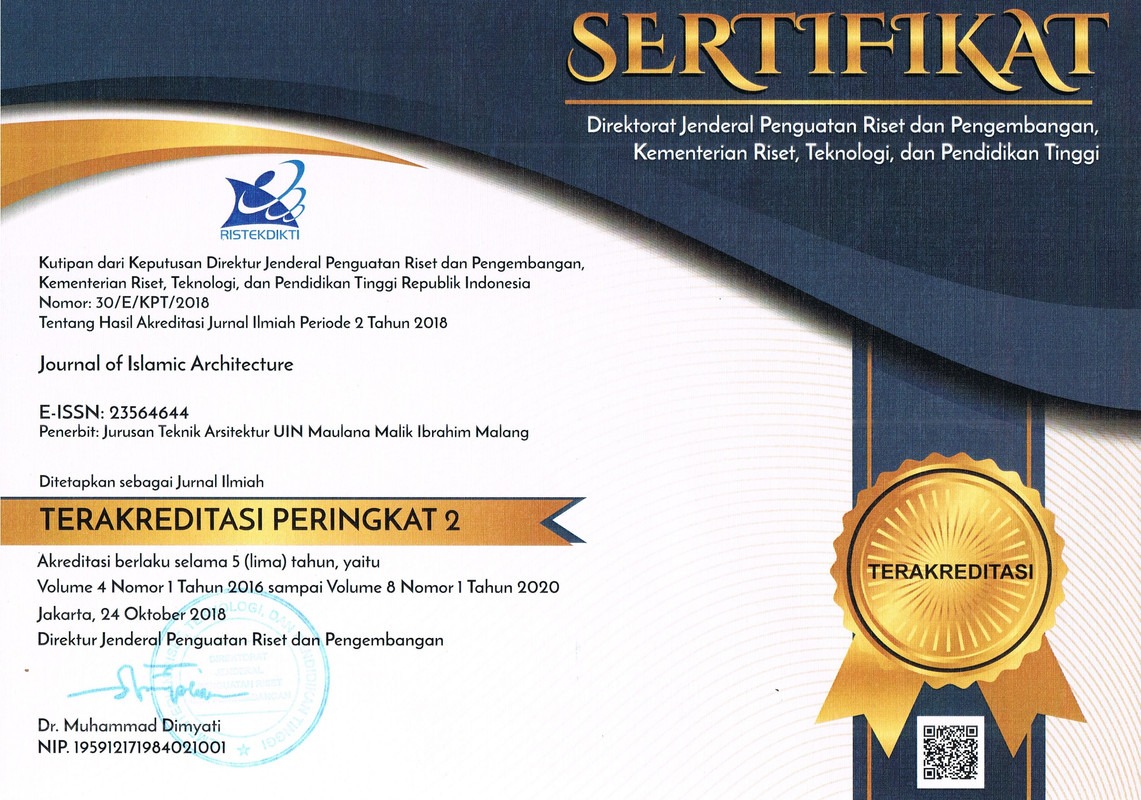A Comparative Study of Entrance in Traditional and Contemporary Houses of Iran
Abstract
In contemporary houses in Iran, because of changes in the methods of designing and building houses, importance of entrance reduced to such level that now in contemporary houses entrance is just a door. Entrance correlates indoor safe space of house and outdoors. It`s importance lays in controlling entry, exit, territory and hierarchy. Since house owners were satisfied with traditional form of entrance, it is a good idea to learn from them in designing new entrances. The purpose of this research is to find a way for designing appropriate entrances for Iranian contemporary houses. To do this at first 40 traditional houses and 40 contemporary houses in Isfahan and Kashan were selected. These two cities are from margin of desert and the origin of traditional houses of Iran. Analysis showed that blockage of visual and phonic relation, creating a space between outdoor public space and indoor private space, creating access patterns to internal spaces and traits that separate in and out were the most significant properties of traditional entrances. All these traits are ignored in contemporary entrances. Suggestions made for design include creating public meeting space in yard and creating a separate entrance space for each house in apartments.
Keywords
Full Text:
PDFReferences
A. NoghreKar and M. manan Raisi, “Iconological analysis of Iranian house system according to the relation of house context layers,” HONAR-HA-YE-ZIBA, Memari-va-shahrsazi, vol. 46, pp. 5–14, 2011.
A. Einifar and A. Aghalatif, “Concept of territory in residential complexes; Comparative study of two residential complexes in level and height in Tehran,” HONAR-HA-YE-ZIBA, Memari-va-shahrsazi, vol. 47, pp. 17–28, 2011.
D. P. R. Patterson, “‘There’s Glass between Us’: A critical examination of ‘the window’ in art and architecture from Ancient Greece to the present day,” FORUM ejournal, vol. 10, no. June, pp. 1–21, 2011.
M. Vidale, “Aspects of Palace Life at Mohenjo-Daro,” South Asian Stud., vol. 26, no. 1, pp. 59–76, 2010.
V. Fraser, “Architecture and imperialism in sixteenth centuary spanish america,” Art Hist., vol. 9, no. 3, pp. 325–335, 1986.
A. R. Bloch, “Baptism and the frame of the south door of the Baptistery ,” Sculpt. J., vol. 18, no. 1, pp. 24–38, 2009.
A. V. Coonin, “Vittorio Ghiberti and the frame of the south door of the Baptistery ,” Sculpt. J., vol. 18, no. 1, pp. 38–52, 2009.
J. S. Arango, “Law and order,” Inter. Des., vol. 76, no. 6, pp. 85–88, 2005.
C. H. Mortensen, M. Rudloff, and V. Vestergaard, “Communicative Functions of the Museum Lobby,” Curator Museum J., vol. 57, no. 3, pp. 329–346, 2014.
R. A. Brown, “Castle gates and garden gates,” Archit. Hist., vol. 27, pp. 443–445, 1984.
A. A. Dehkhoda, Persian dictionary, term Vav. Tehran: University of tehran press, 1966.
M. K. Pirnia and G. Memarian, Persian architceture. Hamedan: Sorushe danesh, 2008.
H. Mahabadi, Islamic architecture. Qom: Hadafe sabz, 2011.
K. Haji Ghasemi, Ganjname; Houses of Kashan. Tehran: Shahid beheshti unversity press, 1996.
C. Norberg-Schulz, The Concept of Dwelling: On the Way to Figurative Architecture. Electa, 1984.
C. Norberg-Schulz, Genius Loci: Towards a Phenomenology of Architecture. 1991.
N. Ardalan and L. Baktiar, The Sense of Unity. The Sufi Tradition in Persian architecture. 1973.
H. Sultan zade, Entrance spaces in traditional architecture of Iran. Tehran: Daftare pazhuhesh haye farhangi., 2011.
A. Einifar, “A pattern for analyzing flexibility in Iranian traditional houses,” HONAR-HA-YE-ZIBA, Memari-va-shahrsazi, vol. 13, pp. 64–77, 2003.
K. Haji Ghasemi, Ganjname; Houses of Isfahan. Tehran: Shahid beheshti unversity press, 1998.
M. Haeri Mazandarani, House, Culture, Nature; analyzing architecture of historic and contemporary houses. Tehran: Study and research center of urban planning and architecture, 2011.
A. Einifar and G. Ali, “Effects of streets construction in the context of Iranian cities on transformation from traditional to modern housing, case study: Hamedan,” Res. J. Environ. earth Sci., vol. 6, pp. 168–173, 2014.
DOI: https://doi.org/10.18860/jia.v4i4.4266
Refbacks
- There are currently no refbacks.






